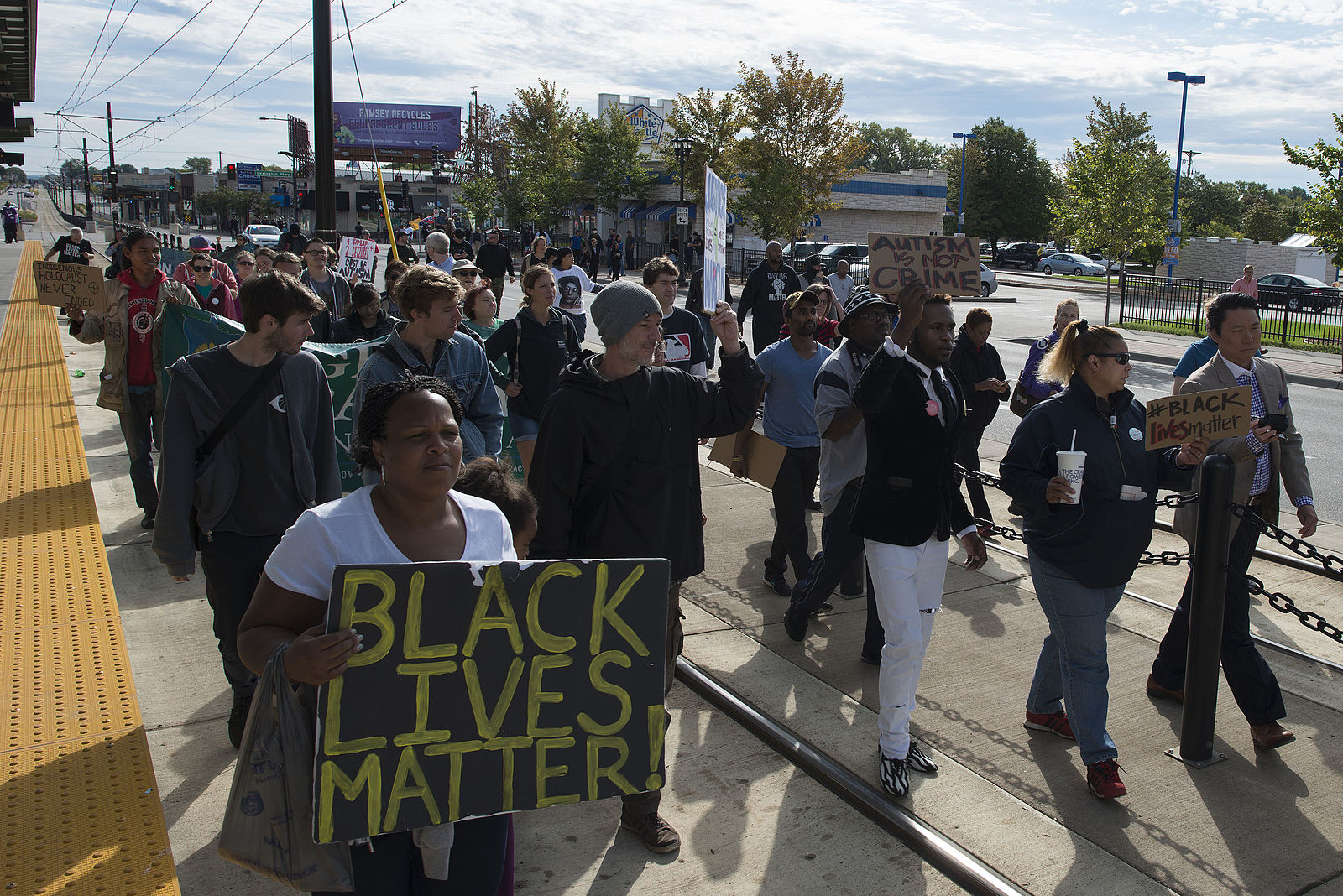Views expressed in opinion columns are the author’s own.
In the past few days, St. Louis has erupted from the acquittal of white former police officer Jason Stockley, who shot and killed a black man named Anthony Lamar Smith in 2011. News coverage has been a collection of contrasting images: peaceful marches and protests throughout the day and flashes of violence with the police in the evening.
Outrage in cities across the country because of police brutality and murder is not new; protests have erupted in Ferguson, Baltimore, New York, Houston and many more cities in the last few years. Although understanding the totality of what is going on is important, it’s equally important to examine the language and images used to characterize it in the media and our everyday lives.
In a now-famous video, Baltimore activist Kwame Rose confronted Fox News host Geraldo Rivera about media coverage of the Baltimore unrest surrounding the murder of Freddie Gray, saying to him, “You’re not here reporting about the poverty levels up and down North Avenue. … You’re not here for the death of Freddie Gray. … But you’re here for the black riots.” Rose’s criticism defines media coverage of protests like those in Baltimore and St. Louis, creating a narrative that paints the actions of black protesters as dangerous and unjustified, when in reality they are the complete opposite.
This framework for thinking about acts of protest and violence goes beyond the media; it is present in our everyday lives and conversations, and it needs to be addressed. We perpetuate narratives about criminality and unjustified violence surrounding police brutality, protests, and Black Lives Matter by adopting language used by the media, such as the words “riot” and “thug.” These words imply unjust action in the protests and violence and criminality in the protesters — something historically done to delegitimize black protesters — and unfairly misrepresent their actions and intentions by portraying them as unjustified responses to an oppressive system.
Furthermore, focusing on moments of violence and looting shifts the conversation away from fundamental structural issues and the role we each have in them — something imperative to think about when examining avenues of personal action.
I implore everyone to think about the ways we speak about events like the ones in St. Louis; to think about the words we use and the narratives we play into; to think about our individual roles in the systems of oppression at play. It is human nature to seek comfort, and particularly at a school as big as the University of Maryland, it is easy to retreat into groups which affirm and align with our beliefs. However, these echo chambers often seem to foster abstract conversation and complacency — in no way critically engaging with or holistically examining the structural forces present at every level of society and coming up with concrete action.
As a person in a position of great privilege, I have been trying to bring these conversations into the different classrooms and groups I inhabit, and it’s something I firmly believe all white students here need to do more of. It is not the responsibility of students of color to educate us. It is imperative we counter these false narratives in the media by fostering discussions which not only use different language but also challenge the overall paradigm through which these issues are and have been portrayed.
Sarah Riback is a sophomore English and sociology major. She can be reached at riback.sarah@gmail.com.



